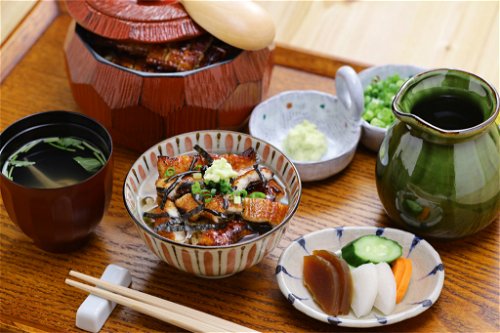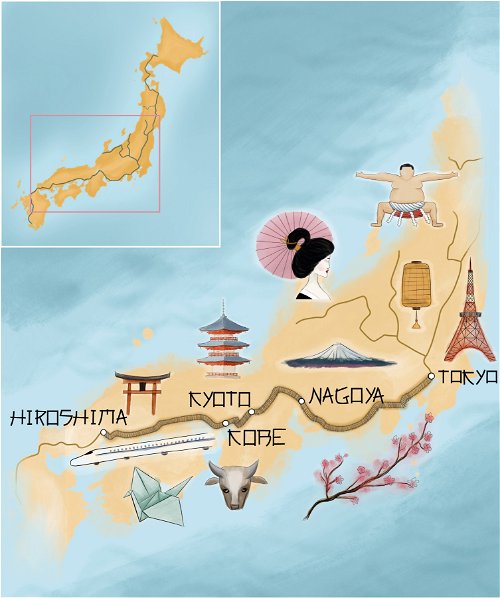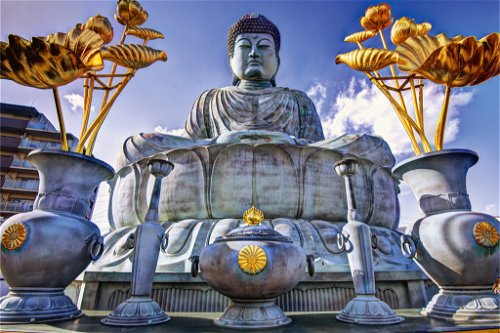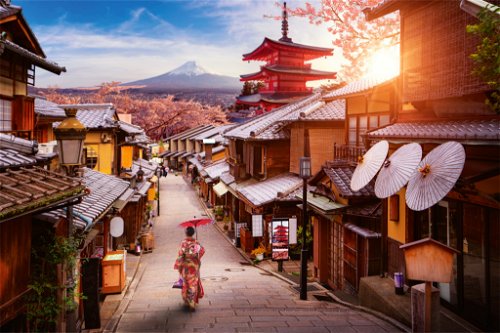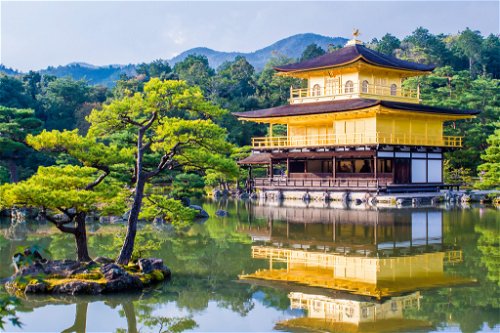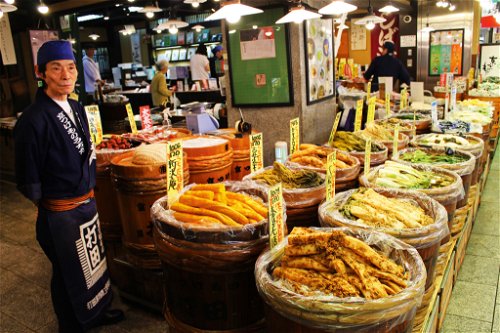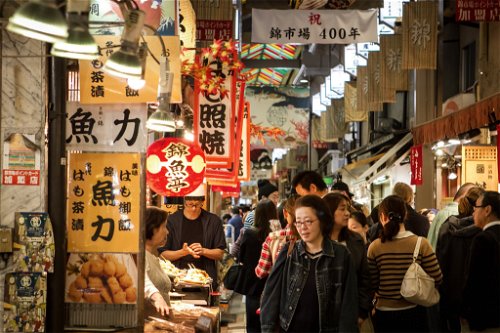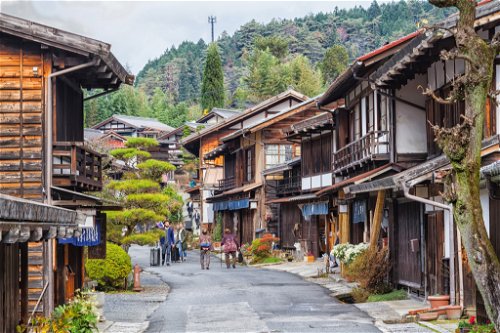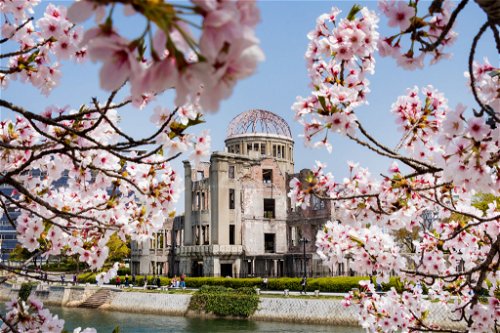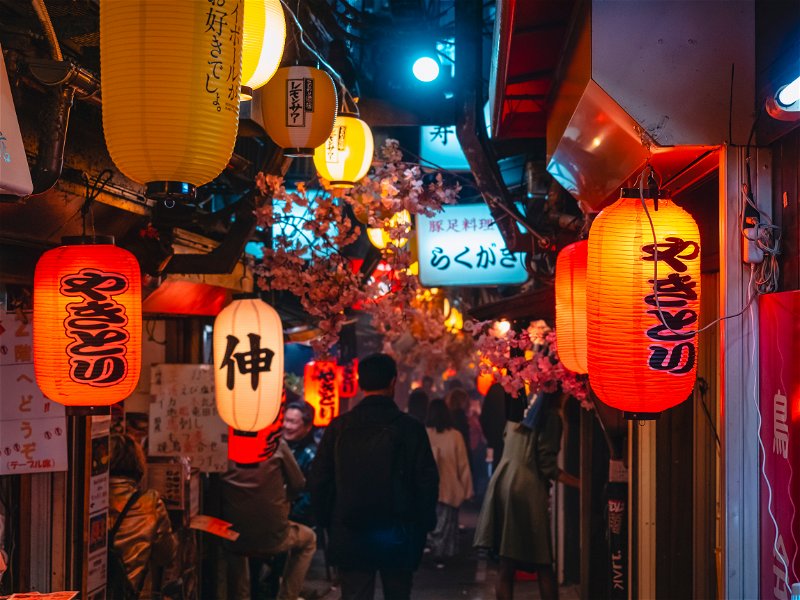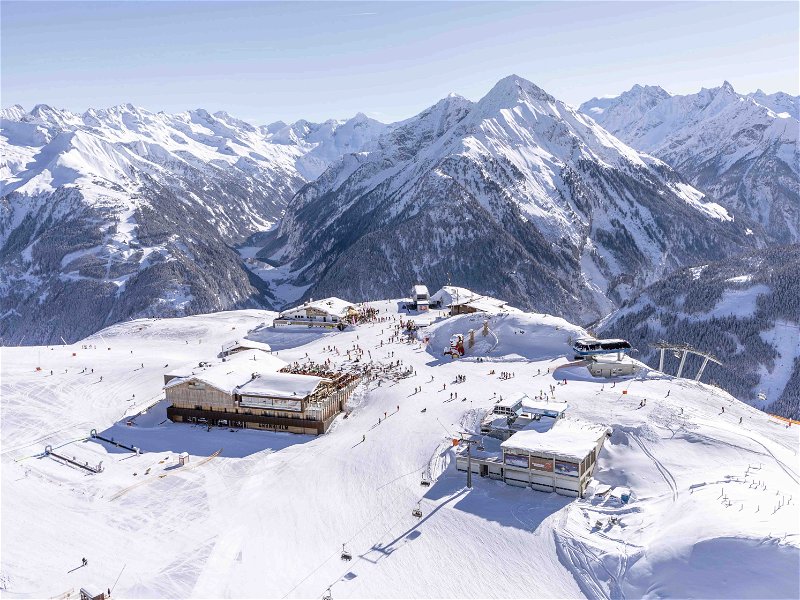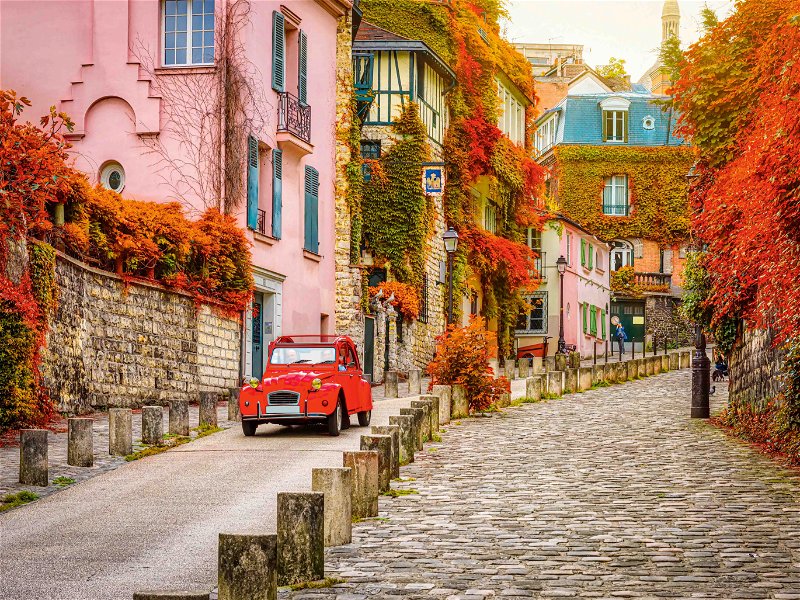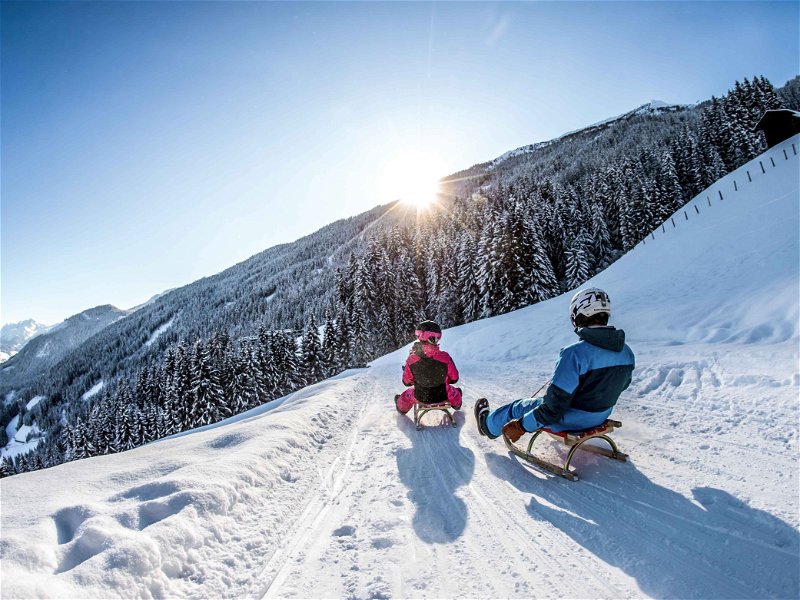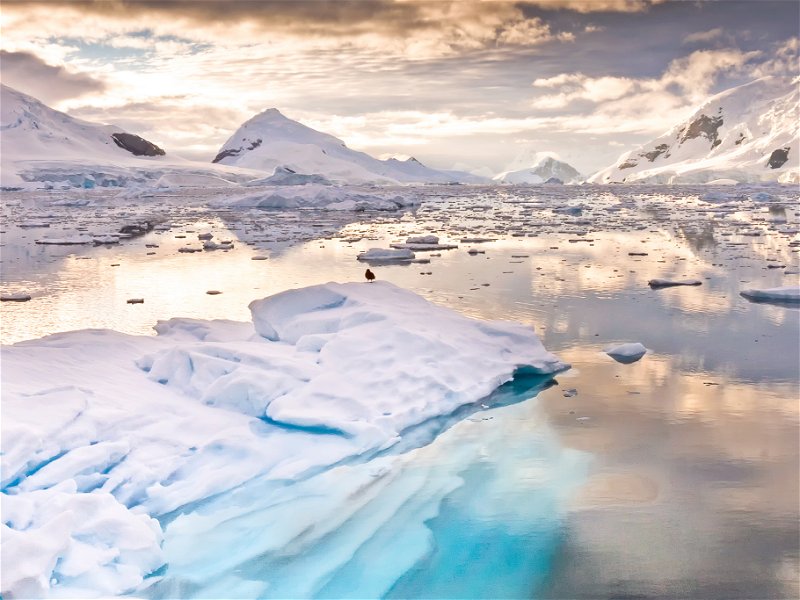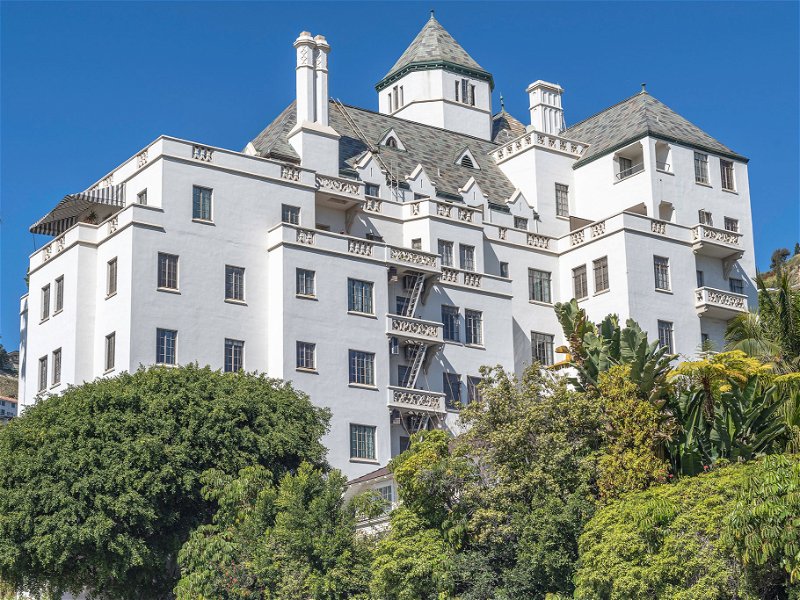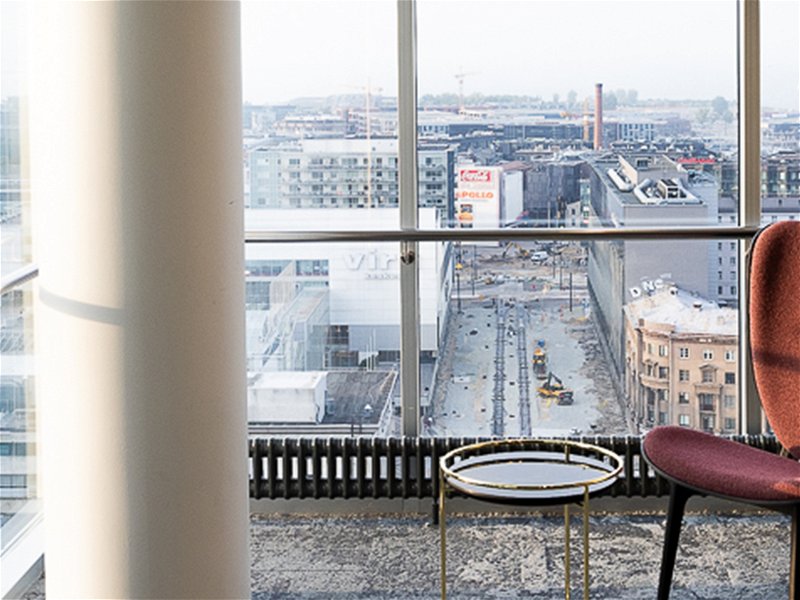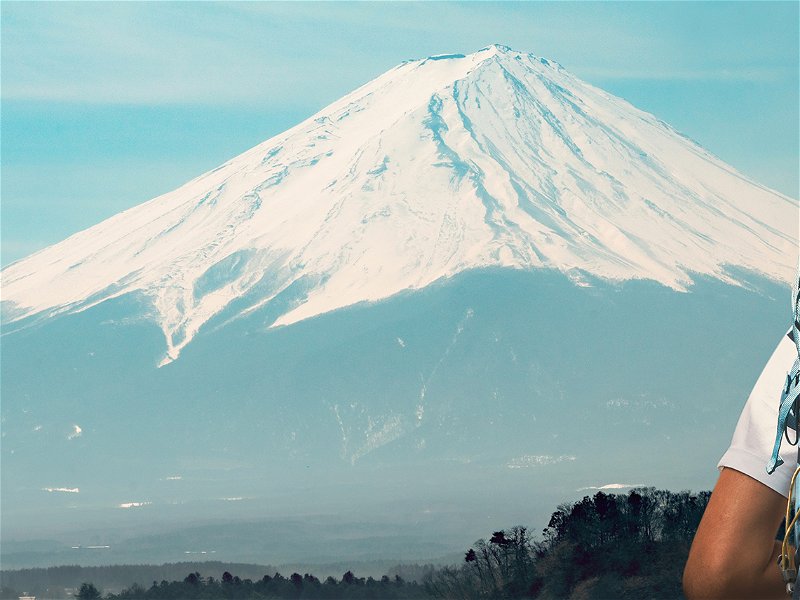The Shikansen: from Tokyo to Hiroshima by express train
The famous Shinkansen trains travel at up to 320 kilometers per hour and are both safe and extremely punctual. The express trains are celebrating their 60th anniversary this year. A travelogue from the metropolis of Tokyo via the old imperial city of Kyoto to Hiroshima.
The time window is only a few minutes long. And everything else has to be just right: A seat on the right-hand side and a cloudless sky are prerequisites. Catching an unobstructed view of Mount Fuji, the iconic active volcano and highest mountain in Japan, as the Shinkansen whizzes past, is no easy feat. This is not least due to the speed of the train, which now connects Japan's most important cities from north to south on nine lines.
The Shinkansen is world-famous – and embodies the Japanese quest for perfection: with a travel speed of up to 320 kilometers per hour, it is one of the fastest trains in the world. But above all, it is one of the safest: the Shinkansen has been rushing through Japan since 1964, when it was opened in time for the Olympic Games. This year it is celebrating his 60th anniversary. Fatal accidents since its introduction? Not a single one!
And then there's punctuality. It has top priority in public transportation in Japan. On average, delays are less than one minute a year – some European rail companies can only dream of that. This requires perfect planning and discipline, including on the part of the travelers. After all, the Shinkansen transports thousands of passengers every day.
Probably the most iconic line is the Tokaido Shinkansen. It is named after the most important postal and trade route of the old imperial era, the Tokaido. It connected the seat of government of the Tokugawa shogunate Edo – today's Tokyo – with the imperial capital Kyoto. 53 stations with inns and post offices were built along the 488-kilometer route, where travelers could stop for refreshments. Back then, the journey was also the destination.
Even today, the route is still the busiest in Japan – but the journey is much faster: the Tokaido Shinkansen connects Tokyo with Hiroshima via Nagoya and Kyoto; around 400,000 passengers travel on the route on weekdays – more than on any other route in the world.
Starting point Tokyo
The journey begins in the metropolis of Tokyo, where you can escape the hustle and bustle in comfort by train. The journey from Tokyo to Hiroshima, around 800 kilometers away, only takes around four hours if you don't make any stopovers. But these are worth seeing.
The most important hub and starting point for the journey is Tokyo Station, the capital's main railway station, which is a sight in itself. The red brick Marunouchi building from 1914 defies the architectural modernism of glass and steel that surrounds it. Ten tracks are reserved for the Shinkansen alone. One of them is the Nozomi ("hope"), the fastest of all trains in the Shinkansen series, which shoots westwards in a hurry - and back again.
At the station, you can enjoy culinary delights in the underground mall – at Ramen Street or at an overwhelming selection of bento lunch boxes. Then it's straight to the train. (Even though eating in public is frowned upon in Japan: Food is allowed on long-distance trains, as long as it doesn't bother other passengers with its smell). The doors open. The passengers board quietly but quickly, their luggage has to be stowed safely. And the whistle sounds to the second. No delays!
Etiquette and rules generally characterize coexistence in this densely populated country. The most important thing is to be considerate of others. On the Shinkansen, this means, among other things: no cell phone ringing, no video calls, no loud conversations! While the express train rushes pleasantly along, you can watch the countryside pass by outside the train windows in peace and quiet.
Underestimated Nagoya
On the way west, you get an idea of how far the metropolitan region stretches. Even after that, the towns in rural Japan often almost merge into one another. After around 45 minutes of driving, you can catch a glimpse of Mount Fuji – or not.
A short time later, you are already standing on the platform in Nagoya, the fourth largest city in Japan. Tourists tend to overlook the industrial city, which at first glance does indeed appear quite modern and faceless. But the stopover is worth it – for a culinary excursion and the "Nagoya meshi", the regional cuisine of Nagoya, which is famous throughout Japan.
One of the food tours will give you an insight: from kishimen, a typical, flat Nagoya noodle variation, to miso oden, a stew-like dish with a thick miso sauce.
Hitsumabushi, an eel specialty, is also a must-try. The fish are grilled on a charcoal fire and served with the crispy skin – refined with sake or soy sauce – in millimeter-thin slices on rice. But if you just start eating, the Japanese may look at you the wrong way.
There is also a real ceremony here: Hitsumabushi is eaten in several portions. First just the eel, then with spicy garnishes such as green onions, wasabi and nori seaweed. For the third portion, add green tea or fish stock.
Imperial Kyoto
After the modern cities, where people look forwards rather than backwards, Kyoto promises a journey into the past. In the former capital of the country, which was the seat of the imperial court until the 19th century, the focus is on traditions, culture and history.
Not only in the charming geisha district of Gion, where you can stroll through alleyways with traditional wooden and tea houses and, with a bit of luck, actually discover geishas or apprentice maikos. Above all, the abundance of temples and shrines is overwhelming. The Fushimi Inari Taisha is a magnet for visitors, with around ten thousand torii, the red temple gates that line the paths to the shrine. Kinkaku-ji, on the other hand, built in the 14th century, is a golden pavilion temple that shines out of the beautiful garden and is reflected in a lake. Kyoto is particularly beautiful during the cherry blossom season at the end of March. No matter whether you visit the garden of the former imperial palace or walk along the so-called Philosopher's Path: At hanami time, hundreds, perhaps even thousands of blossoming cherry trees line the almost two-kilometer-long path along a narrow canal.
As impressive as the historical sites are: Temple hopping makes you tired – and hungry. A detour to the Nishiki market helps against the latter. Kyoto is also a good place for a kaiseki dinner, Japanese haute cuisine. The Hyotei restaurant at Nanzen-ji Temple, once a teahouse, has existed for 450 years and the atmosphere there breathes the centuries. The menu offers exclusive culinary art with many courses: aesthetic, fine, full of details. You will spend the night on a rolled-out futon on tatami mats in a luxurious, historic ryokan: the Seikoro. When visiting the onsen, you can soak away all the impressions of the day in the hot water of the bath. By the way: If you are in Kyoto between October and December 2024, you can also visit a pop-up of the world-famous restaurant Noma experience.
The city of cattle
It's only a few kilometers from Kyoto and the next reason for a stopover is already there: it would be a shame not to stop in Kobe – the city after which the world's most famous beef is named. In one of the many restaurants, it is prepared before your eyes before you let it melt in your mouth.
There are always reasons to get out of the car. However, you then have to slow down and switch to slower trains. From Nagoya, it is only a stone's throw to the picturesque Kiso Valley with its places from another time. If you leave the Nozomi in Okayama, it is not far to Uno and the ferry to Naoshima – an island in the Seto Inland Sea that has made a name for itself with galleries and museums.
Hiroshima terminus
The Nozomi hisses tirelessly even further west. Hiroshima is to be the final stop on this train journey after 821 kilometers. The name immediately brings one thing to mind: the detonation of the bomb dropped by the US forces that almost completely destroyed the city at 8:16 a.m. on August 16, 1945. Many decades later, Hiroshima has long since been resurrected, is an important industrial location and, despite its dark history, is anything but depressing, but young, modern and lively.
The catastrophe is of course often commemorated, for example in the Peace Park. A striking memorial is the former "Hall for the Promotion of Industry", which burned down completely and has since been preserved in the same condition with its striking, destroyed dome.
A ghostly image and another exciting side of Japan - before you are catapulted back into the wild frenzy of the cosmopolitan city of Tokyo on the Shinkansen.
Tips & Addresses
Tokyo
Tokyo Ramen Street
Not just to fortify yourself before your departure on the Shinkansen: in "Tokyo Ramen Street" in the mall under Tokyo Station, you are spoiled for choice between eight restaurants with different, delicious noodle soups.
1-9-1 Marunouchi, Chiyoda-ku, 100-0005 Tokyo
tokyoeki-1bangai.co.jp/street/ramen/en
Nagoya
Specialties of Nagoya Food Tour
From hitsumabushi to miso nikomi udon – Nagoya's cuisine offers many regional specialties. The food tour is an opportunity to get to know the taste of this big city.
info@nagoyaisnotboring.com, nagoyaisnotboring.com
Kyoto
Kikunoi Honten
An elegant garden and a well-equipped ceremony room provide the perfect setting for chef Yoshihiro Murata's kaiseki menus. Here, tradition and innovation are brought into harmony. The most recent award was three Michelin stars.
Higashiyama Ward, Shimokawarcho, 605-0825, Kyoto
T: +81 75-561-0015, kikunoi.jp
Hyotei
The history of the Hyotei restaurant goes back around 450 years. The cuisine is just as breathtaking with its artful kaiseki menus, for which Michelin has awarded three stars.
35 Nanzenji Kusagawacho, Sakyo-ku, 606-8437, Kyoto
T: +81 75 771 4116, hyotei.co.jp
Seikoro
The charming, historic ryokan Seikoro is a traditional Japanese place to stay. Breakfast and dinner are served in the rooms in kaiseki style. As is customary in Japan, there is also an onsen, a bath for guests.
467 Nishitachibana-cho, Higashiyama-ku, 605-0907, Kyoto
T: +81 75 561 0771, seikoro.com
Nishiki Market
Covered, 400 year old market in the middle of in Kyoto. Even the displays of the far more than Exploring 100 retailers is exciting. But above all, you can also eat very well there - from sushi to okonomiyaki.
609 Nishidaimonjicho, Nakagyo-ku, 604-8055, Kyoto
T: +81 75 211 3882, kyoto-nishiki.or.jp
Japan Guide Agency
To learn more about the rich history of Kyoto, it is worth taking a guided tour. The Japan Guide Agency offers various private tours of the city with English-speaking guides.
booking@j-g-a.org, j-g-a.org/kyoto.html
Kobe
Steak House Mouriya Lin
In the city of Kobe, you simply have to get out. If only to taste the most famous beef in the world. In the teppanyaki restaurant Mouriya Lin, the outstanding steak specialties arecooked right in front of you.
Queen's Court Bldg. 2F, 1-9-8 Kitanagasadori, Chuo-ku, Hyogo-shi, 650-0012, Kobe
T: +81 78 325 5182, mouriya.co.jp/lin
Hiroshima
The Knot Hotel
The rooms in the very centrally located The Knot are simple, pretty and modern. There is also a roof terrace with a bar and great views over the city.
3-1-1 Otemachi, Naka-ku, Hiroshima-shi, 730-0051, Hiroshima
T: +81 570 009 015, hotel-the-knot.jp/hiroshima/en
Nagataya
In Hiroshima, you should definitely try the regional version of okonomiyaki. The Nagataya specializes in hearty omelettes, which are also available with oysters, squid and seafood.
1-7-19 Otemachi, Naka-ku 1F, Hiroshima-shi, 730-0051, Hiroshima
T: +81 82 247 0787, nagataya-okonomi.com
Peace Tour by bike
Cycling in Japan and seeing the important sights? You can do this in Hiroshima on a tour organized by Sokoiko Cycling,
which also leads to the Peace Park and the Peace Museum.
T: +81 90 4804 7477,sokoiko-mint.com/en
Shimada Fisheries Oyster hat
Oysters are a specialty in Hiroshima. You can hardly get them much fresher than in the Shimada Fisheries Oyster Hut right by the sea. They are eaten where they are harvested. And you can also see the island of Miyajima.
1-2-6 Miyajimaguchi Nishi, Hatsukaichi, Hiroshima-shi, 739-0412, Hiroshima
T: +81 829 30 6356, shimadasuisan.com
Don't miss out!
Sign up now for our newsletter.


